Stuart Forster takes a heritage walk in Delhi and provides an overview of key attractions and things to do in New Delhi, the capital city of India.
Disclosure: Some of the links below and banners are affiliate links, meaning, at no additional cost to you, I will earn a commission if you click through and make a purchase.
A heritage walk in New Delhi
The sun has only just peeked above the horizon but I’m already out on the streets of New Delhi. I want to make the most of my time in India’s capital and the golden hour, shortly after sunrise, is a great time for viewing the city’s architecture.
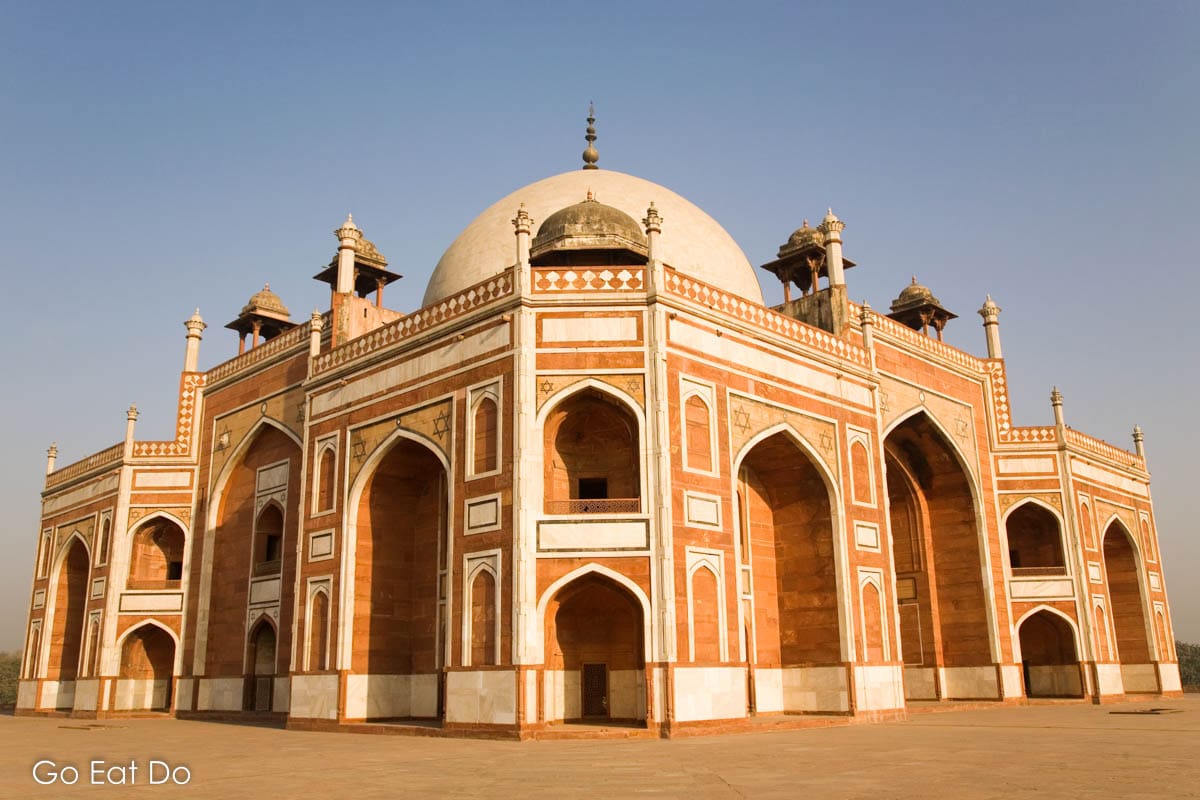
India Gate
The soft sunlight is painting the stone of the India Gate the colour of honey. Looking up I read some of the 13,218 names inscribed on the 42-metre tall arch. Designed by Sir Edwin Luytens, it was unveiled as the All India War Memorial by Lord Irwin, the British Viceroy, in 1931.
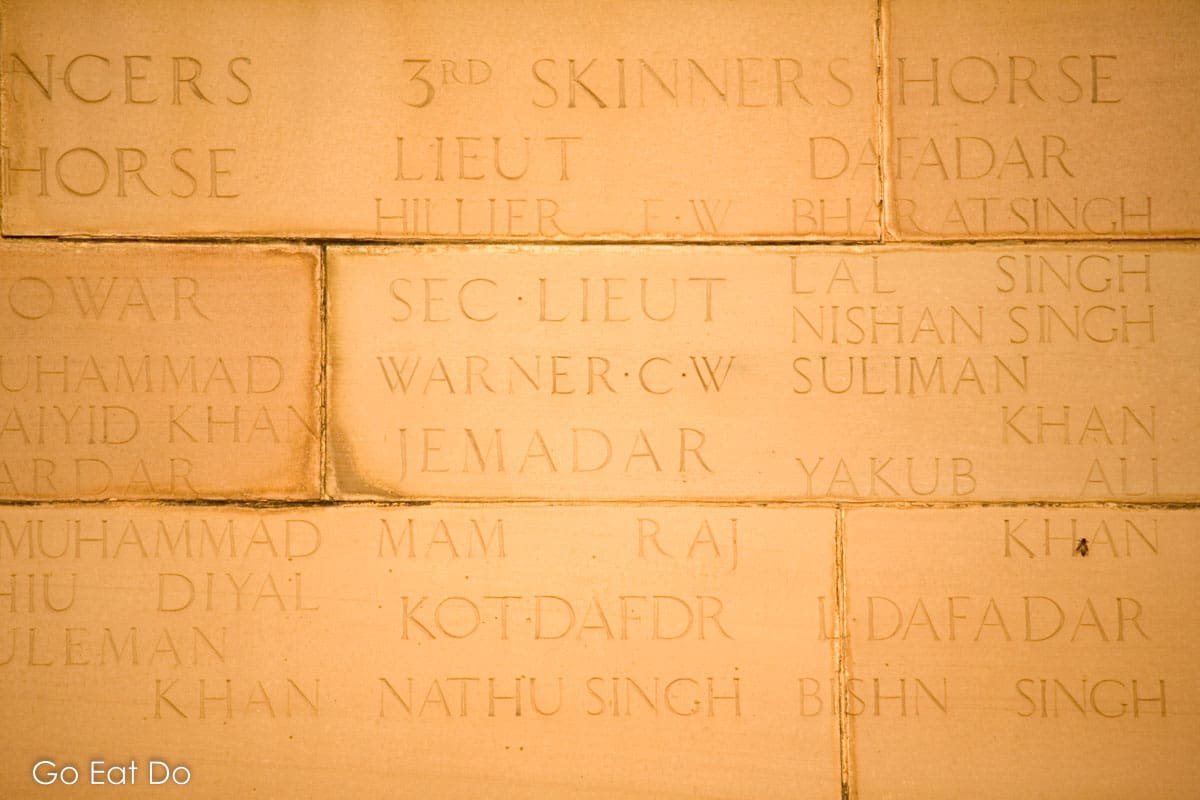
That was the year that New Delhi was officially inaugurated as India’s capital. Almost two decades earlier George V, the Emperor of India, announced his capital was moving here, from Calcutta, during the Delhi Durbar of December 1911.
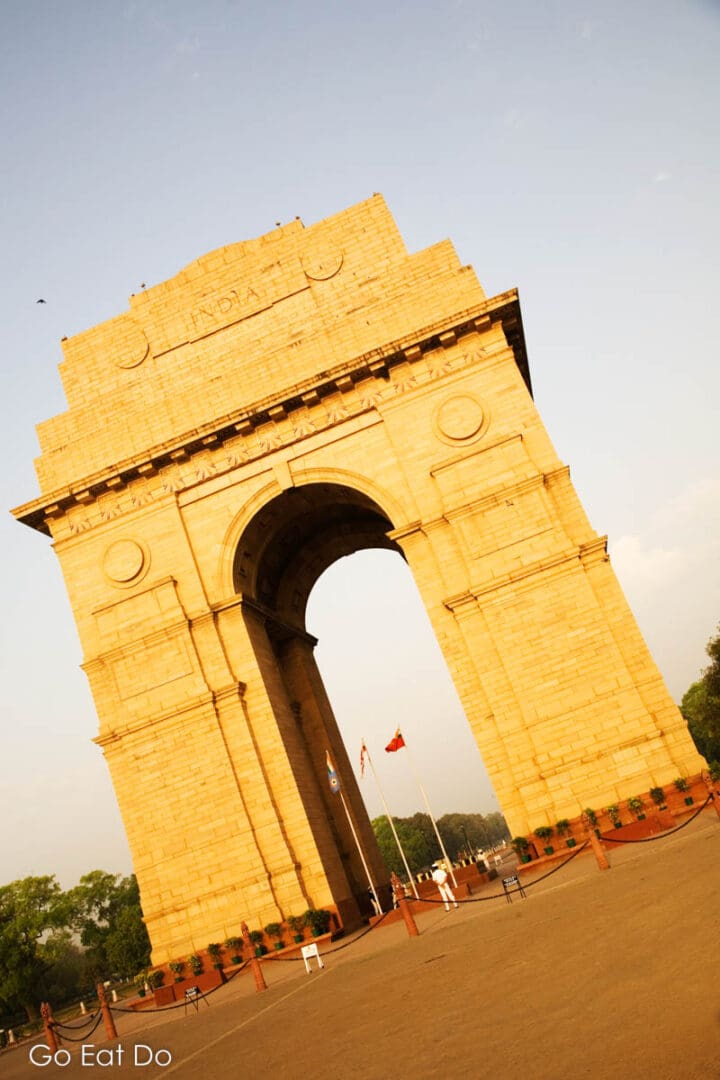
A heritage walk in New Delhi
Delhi, of course, has a far longer history. I see evidence of it within a short stroll of the India Gate.
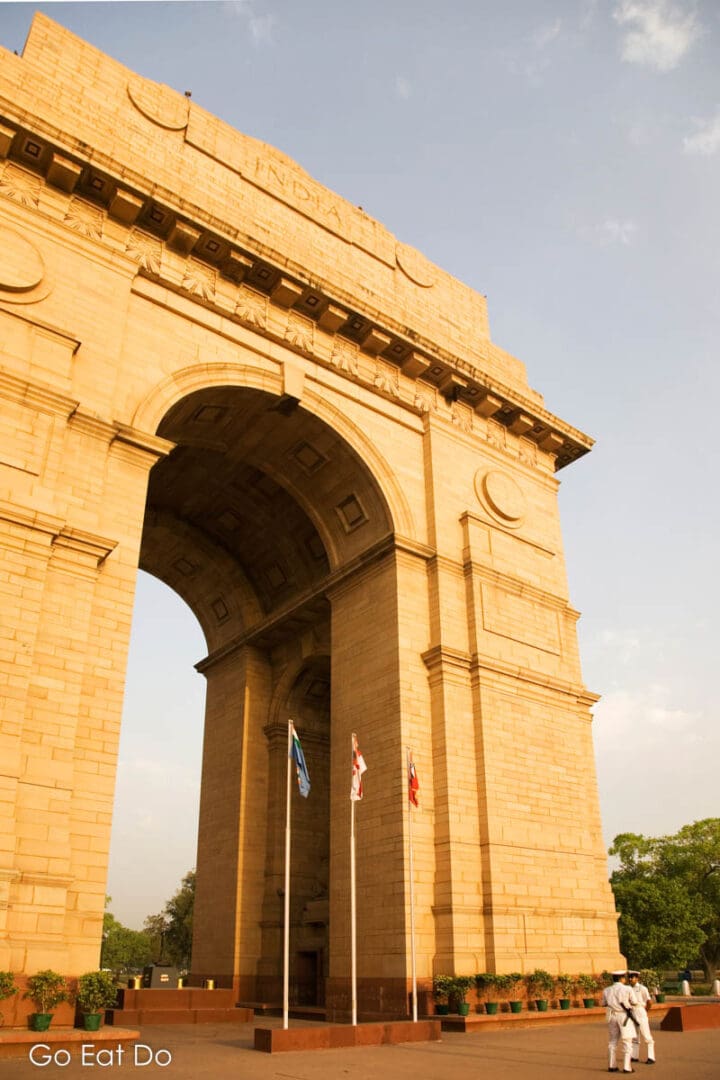
Purana Qila
Still inside the boundary of New Delhi, over at the Purana Qila, I take a look at the walls of the old fortress overlooking the River Yamuna. Archaeologists have excavated Painted Grey Ware pottery from the site, indicating that people lived here more than 3,000 years ago.
The Mughal emperors, who held power from the 16th century until 1857, ordered the reinforcement of the fort’s walls which, in places, bear chatri-style turrets.
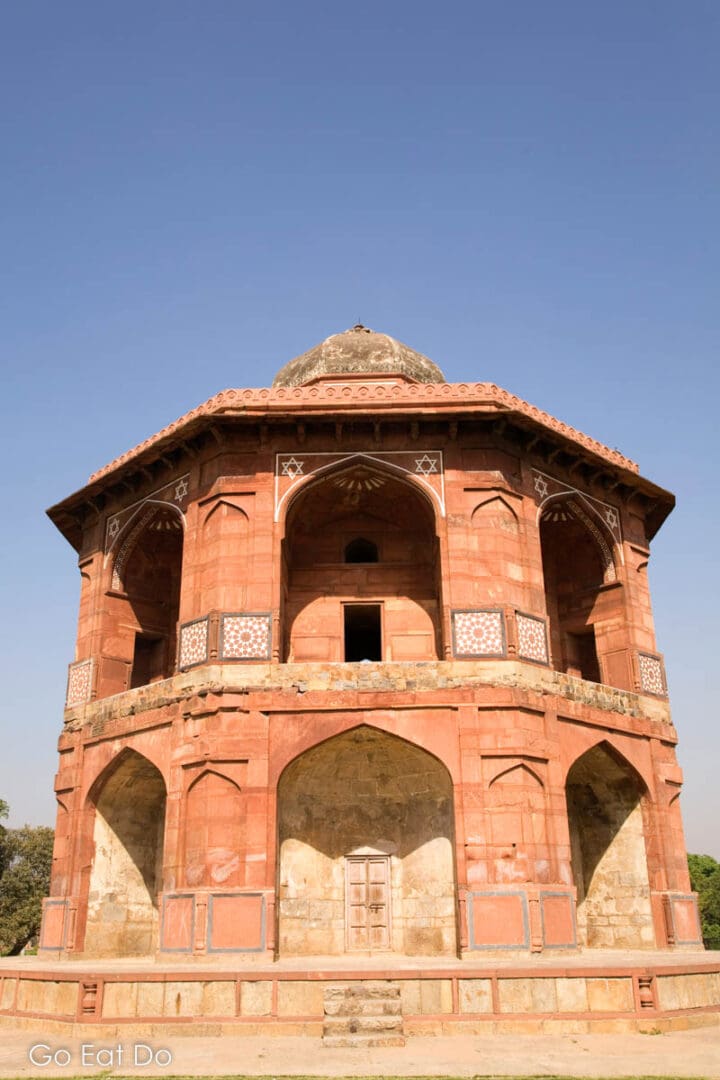
Humayan’s Tomb
I stride onwards to Humayan’s Tomb, the mausoleum of the powerful emperor who died in 1556.
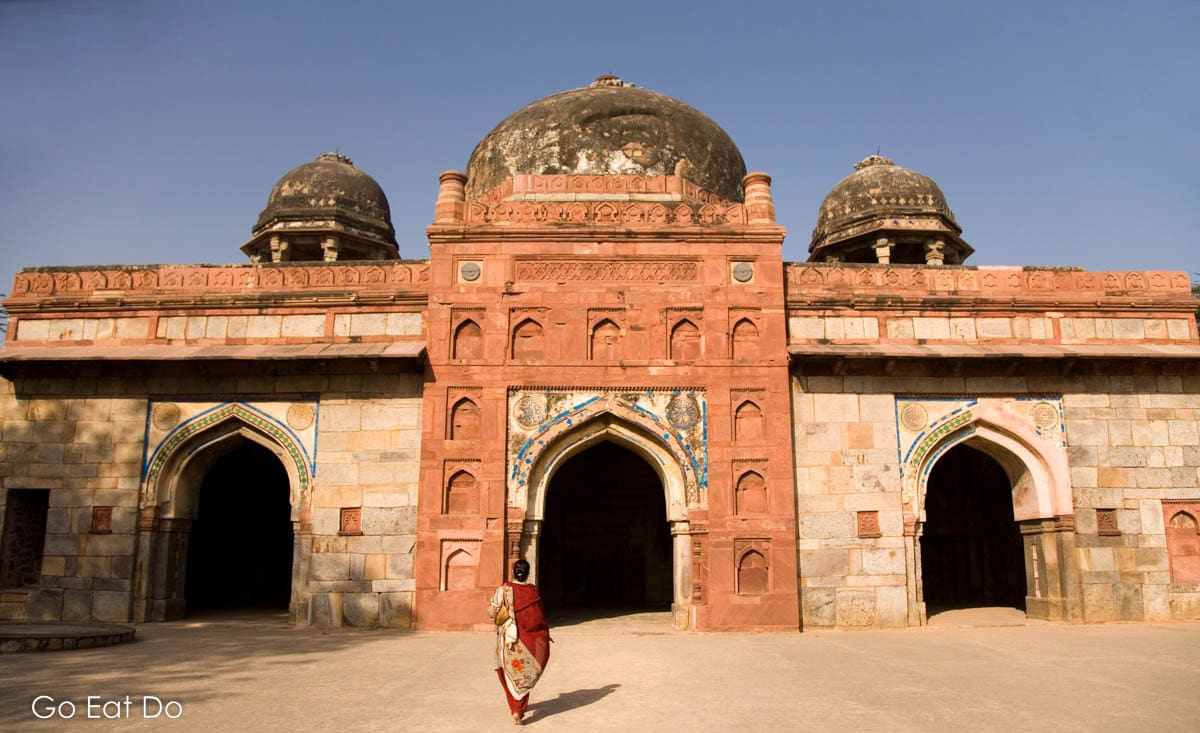
The elegant symmetry leaves me in no doubt as to why the tomb is regarded as one of the finest examples of Mughal architecture and a UNESCO World Heritage Site.
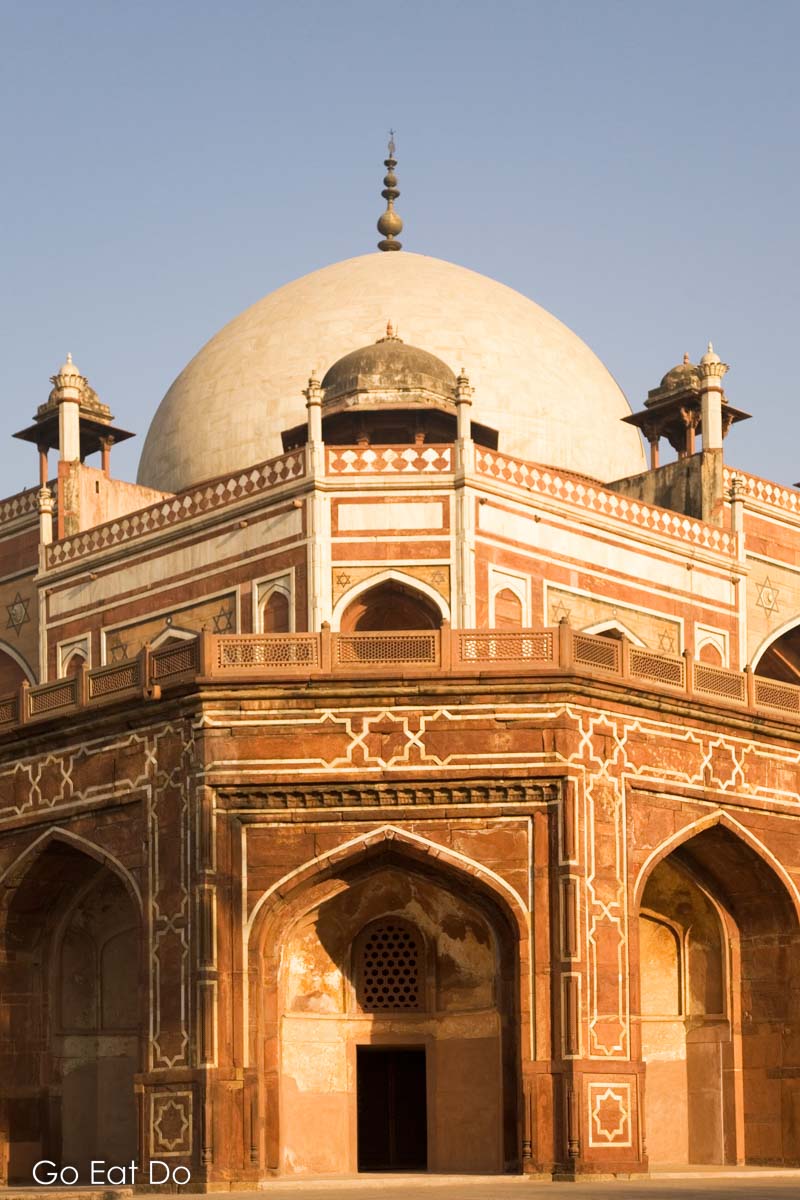
Tomb of Safdarjung
I then visit Safdarjung’s Tomb, built as the resting place for an influential 18th-century statesman.
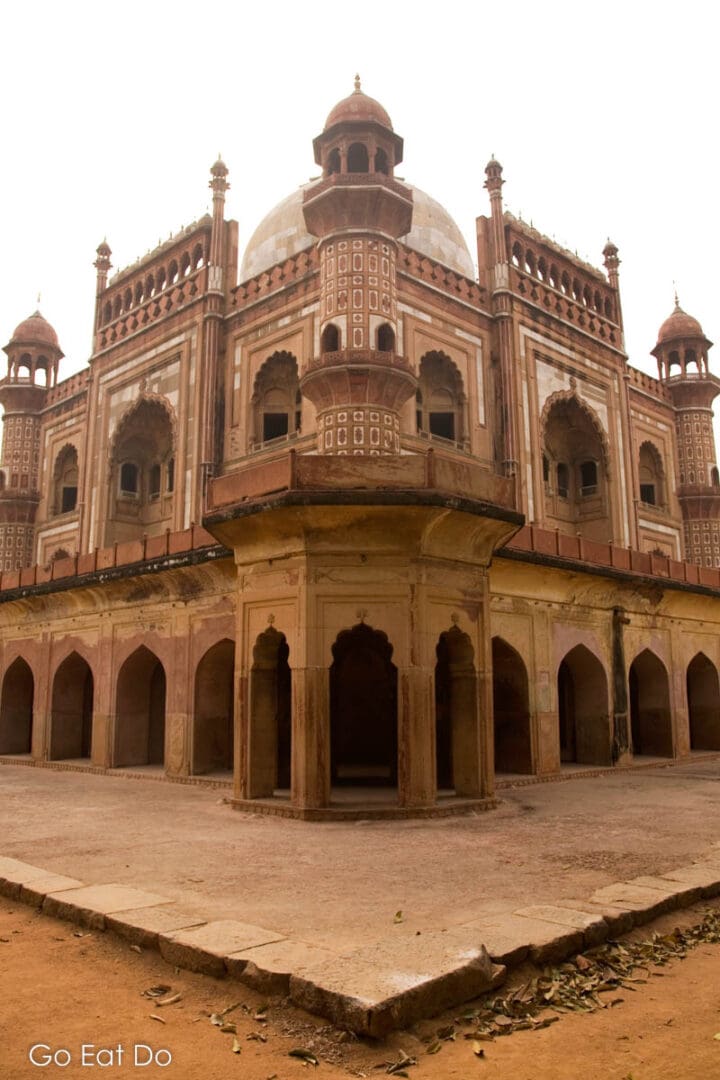
The tombs of Humayan and Safdarjung are both topped by vast cupolas and set within well-tended gardens.
While I’ve come specifically to see the historic monuments, Delhiites dressed in loose-fitting sports gear are here to take morning power walks along the footpaths.
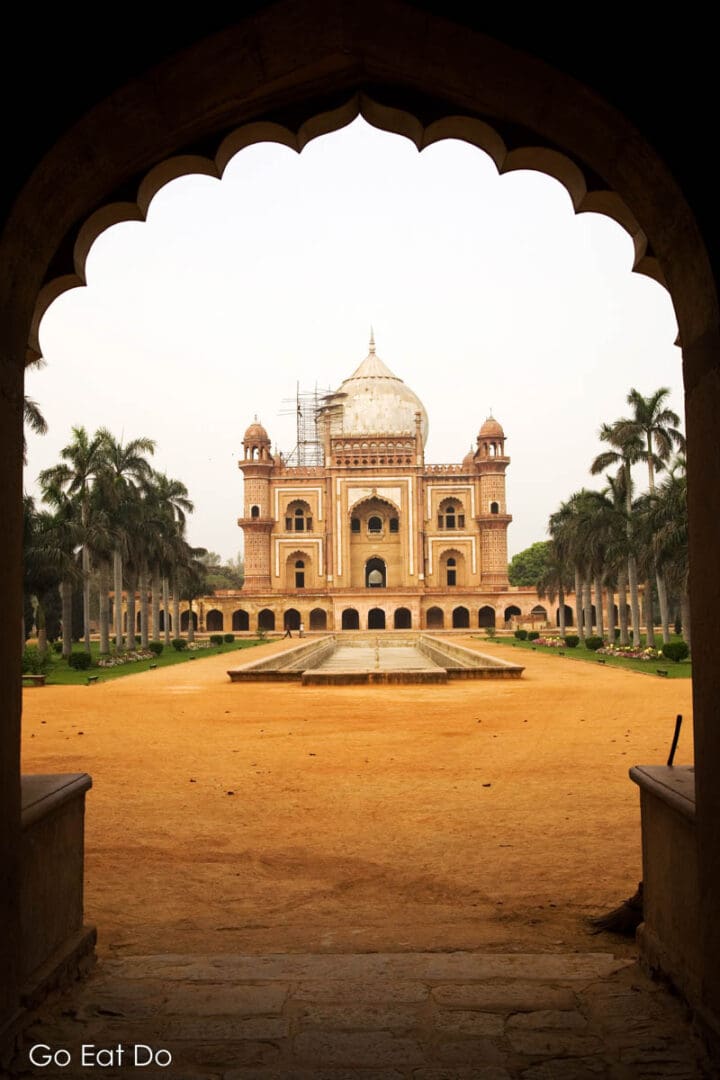
Rashtrapati Bhavan
Countless informal cricket matches are in full swing by the time I’m back on the Rajpath, the broad avenue running between India Gate and the Rashtrapati Bhavan, the official residence of the President of India.
“Ball! Ball!” comes an imploring shout as a tennis ball rolls by my feet. I chuck it back to a waving bowler and a game resumes.
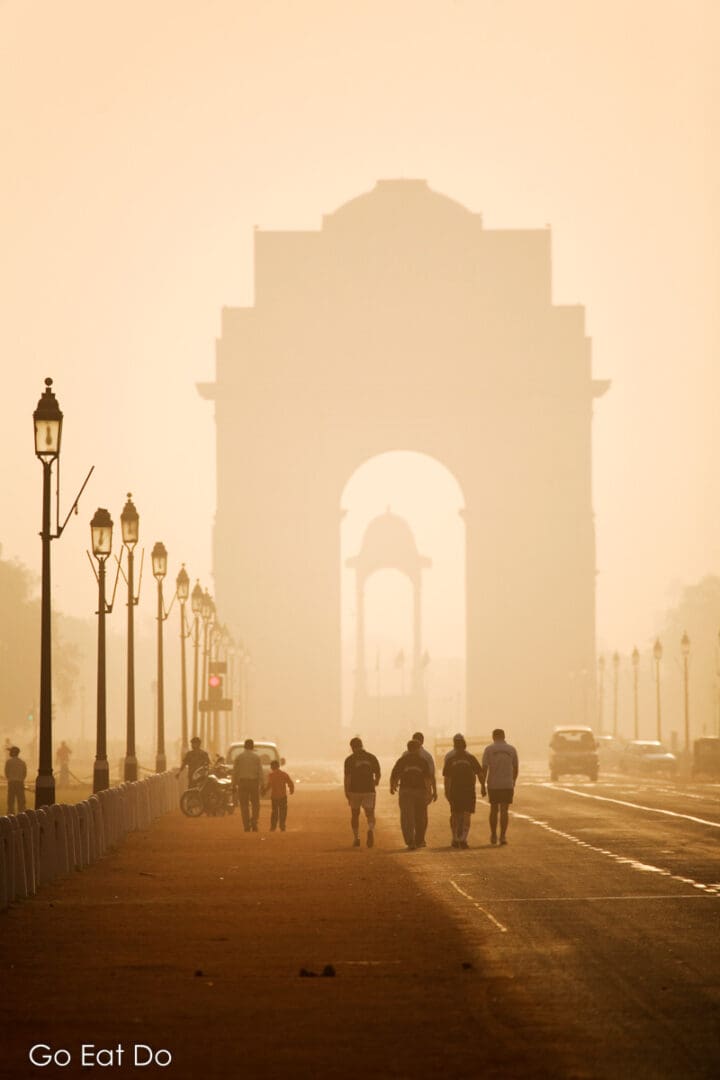
Jaipur Column
Up ahead I see the star-topped Jaipur Column rising in front of the domed, Classical-style governmental buildings that are collectively regarded as the heart of Luytens’ Delhi. That term honours the chief architect of the programme to design New Delhi.
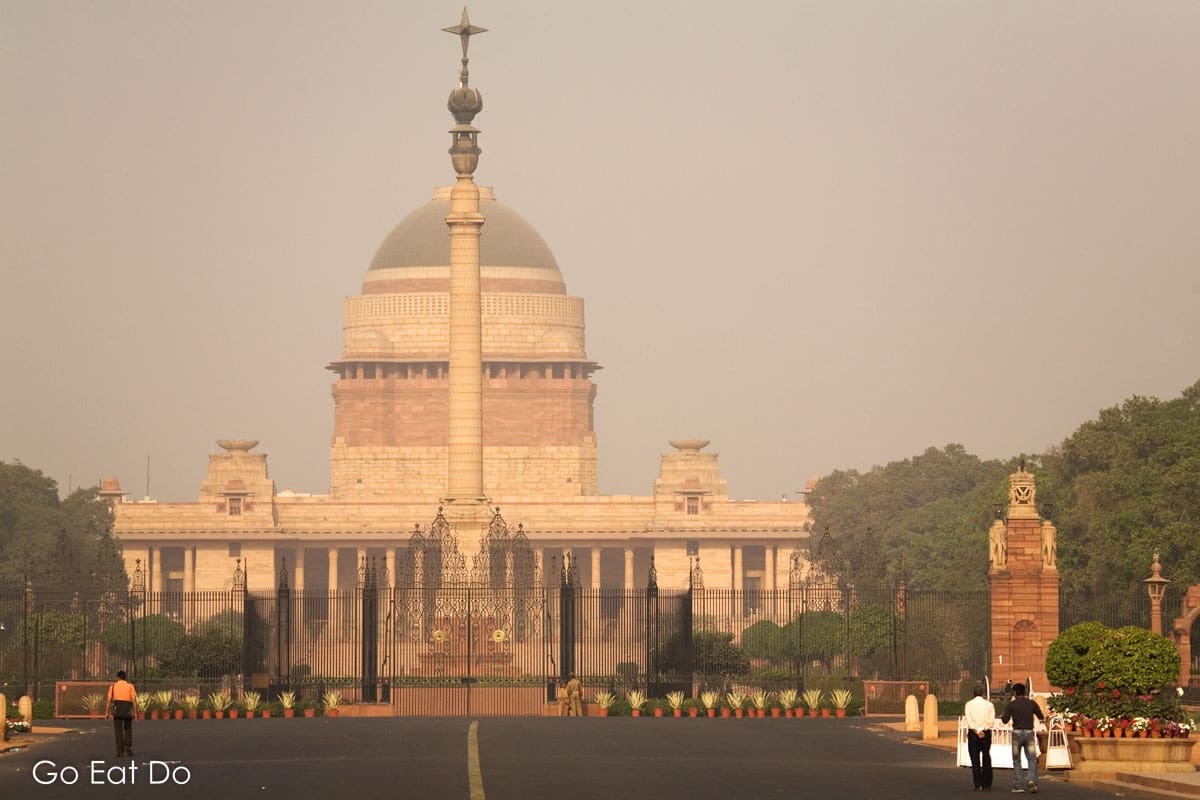
Yet that name is misleading and fails to credit another of the city’s architects. Two of the grandest edifices, the Secretariat buildings on either side of the Rajpath, were the work of Sir Herbert Baker.
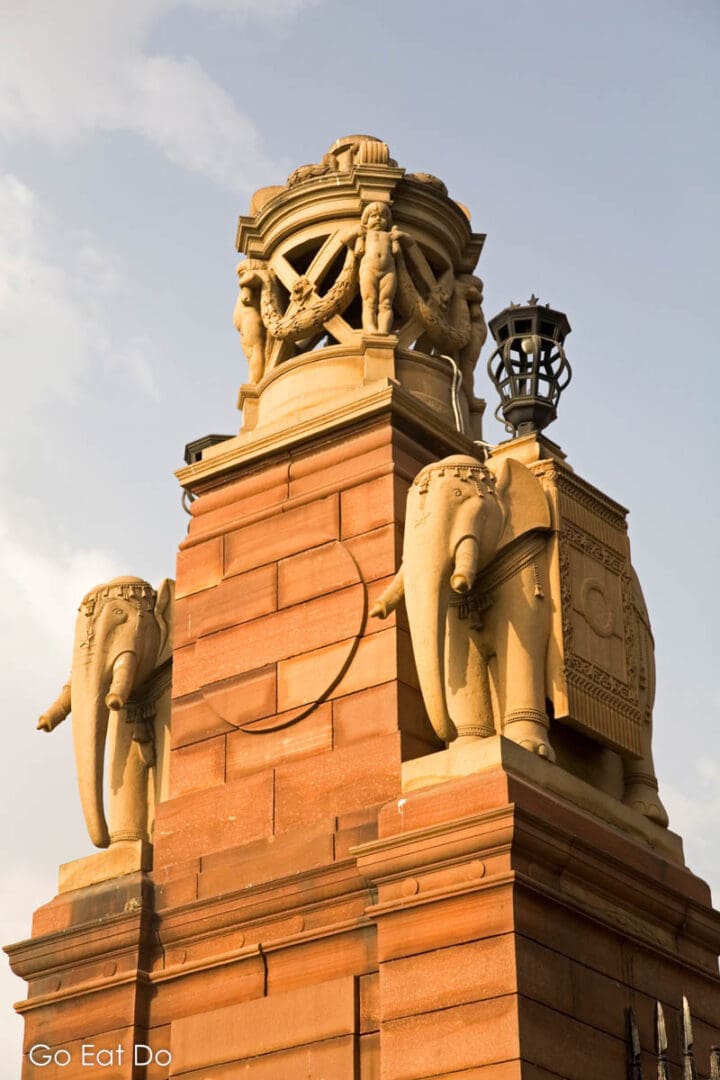
Mughal tombs in Delhi
Coming closer to the buildings I note how traditional Indian elements have been incorporated into the facades. They include sculpted elephants and latticed jali screens, similar to those I saw earlier in the Mughal tombs.
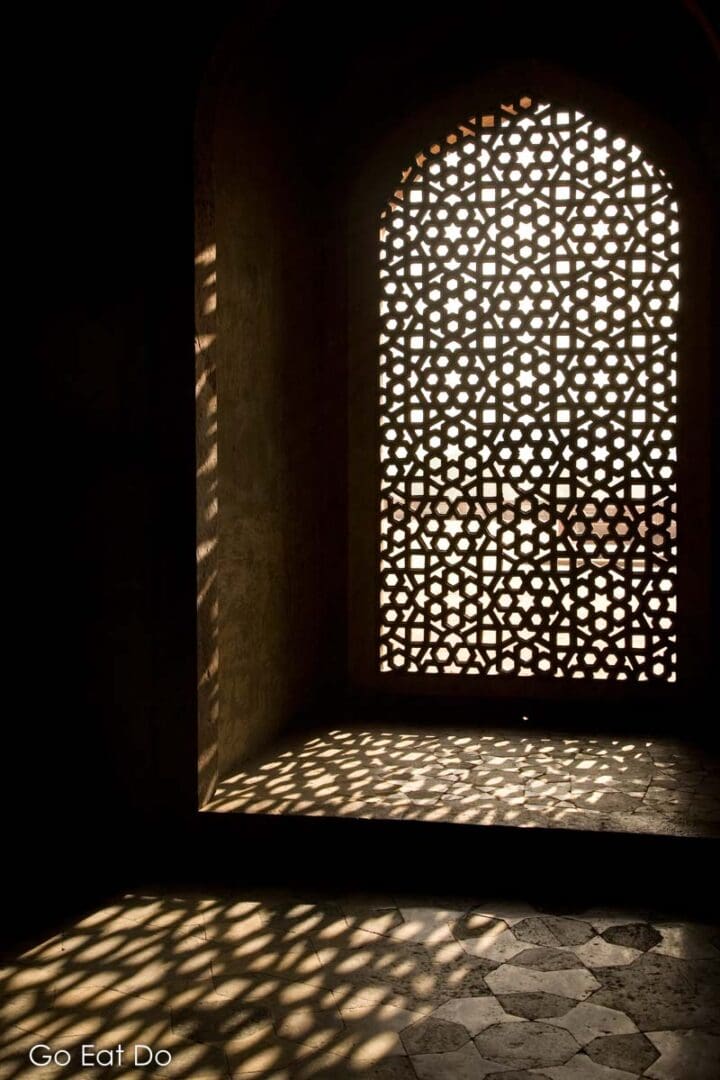
On columns in the forecourt of the building on the north side of the avenue inscriptions, from 1930, record that they were gifts from South Africa and New Zealand. Just 17 years later, India attained independence from the British Empire.
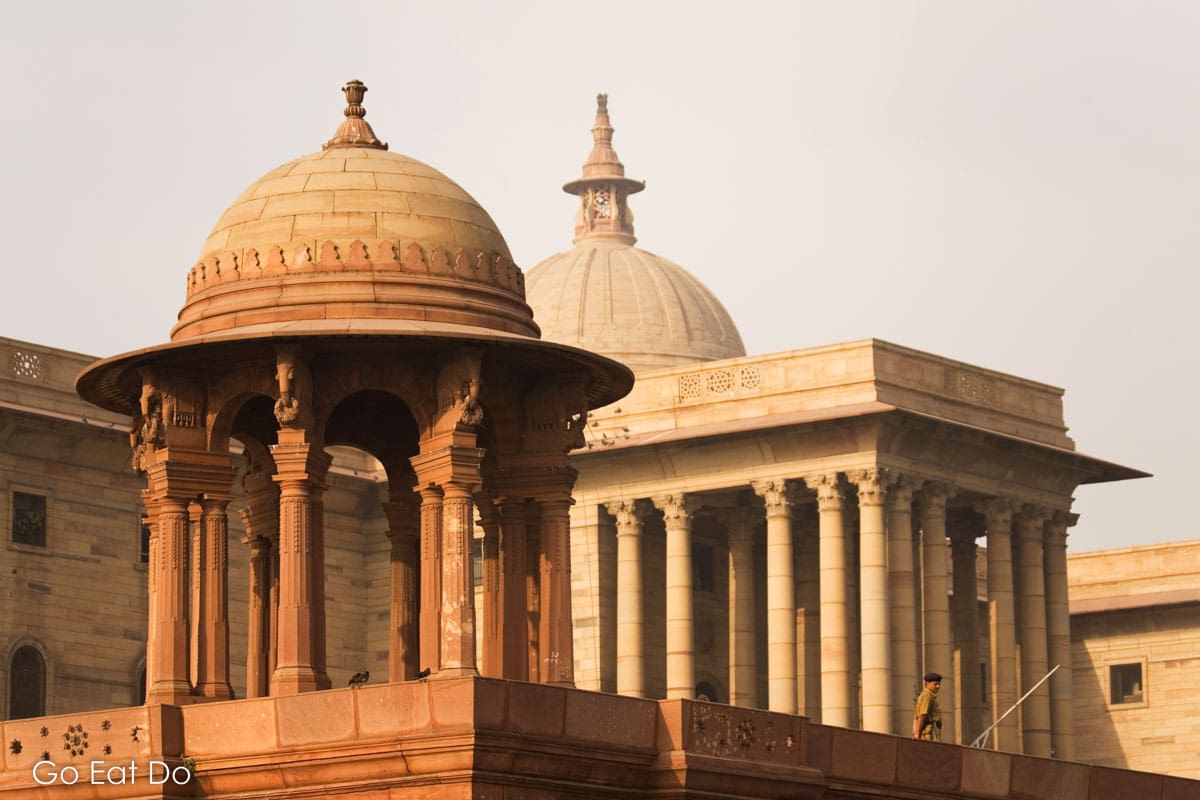
Rashtrapati Bhavan
The Rashtrapati Bhavan was designed to be the Viceroy’s House. By its gates, an aged Indian man with smiling eyes proudly tells me the building is the largest residence of any head of state in the world. It has 360 rooms.
Seeing my camera he urges me to take a rickshaw to Gandhi Smirti, the house where Mahatma Gandhi spent the final 144 days of his life. “The Martyr’s Column marks the spot where the father of our nation breathed his last,” he says with a look of sadness.
I’m grateful for his suggestion as there are so many things to do in New Delhi.

Tourist attractions in Delhi
One attraction that’s already on my itinerary is the National Museum, which displays artefacts providing an overview of five millennia of the Subcontinent’s heritage. If time allows I’ll also pop into the National Museum of Natural History and the Nehru Planetarium.
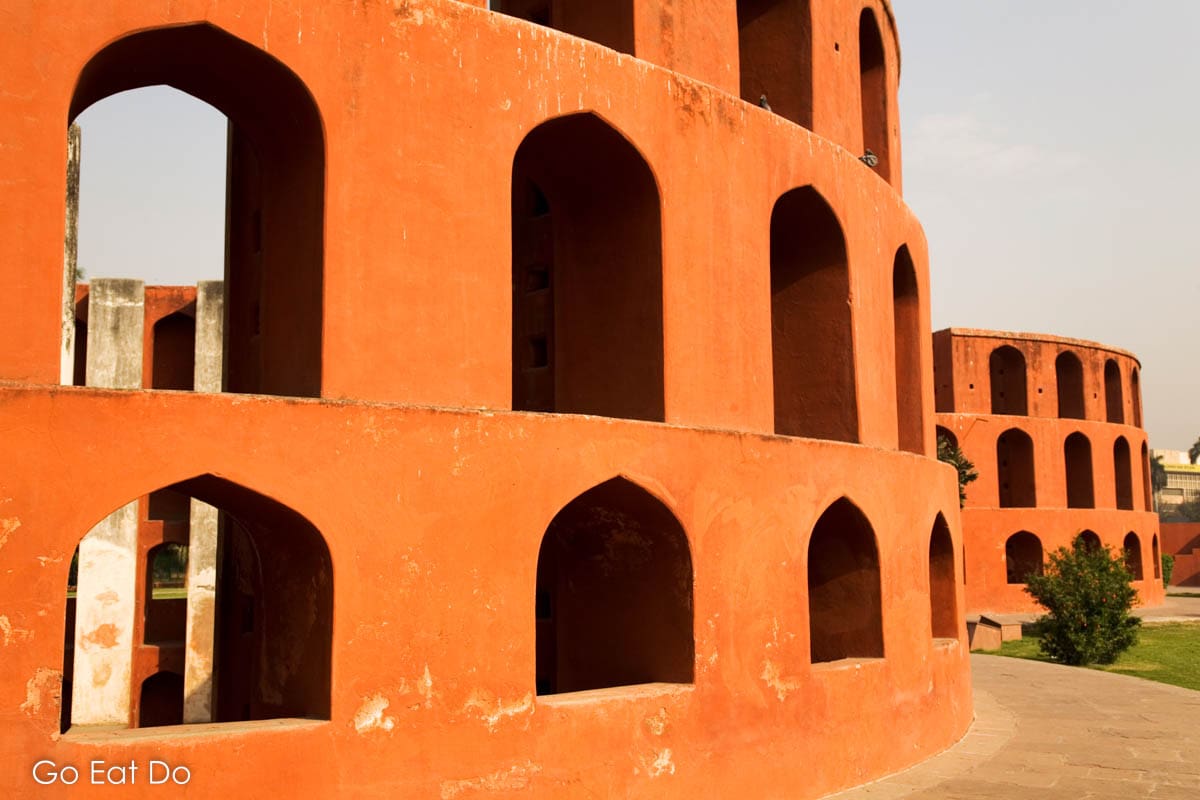
First, I head to the Jantar Mantar, to view the 13 sculpture-like instruments designed so that Maharaja Jai Singh II could make detailed astronomical observations in the early 18th century.
The interplay of light and shadow on the steps, curves and arches of the red and white structures proves intensely photogenic.
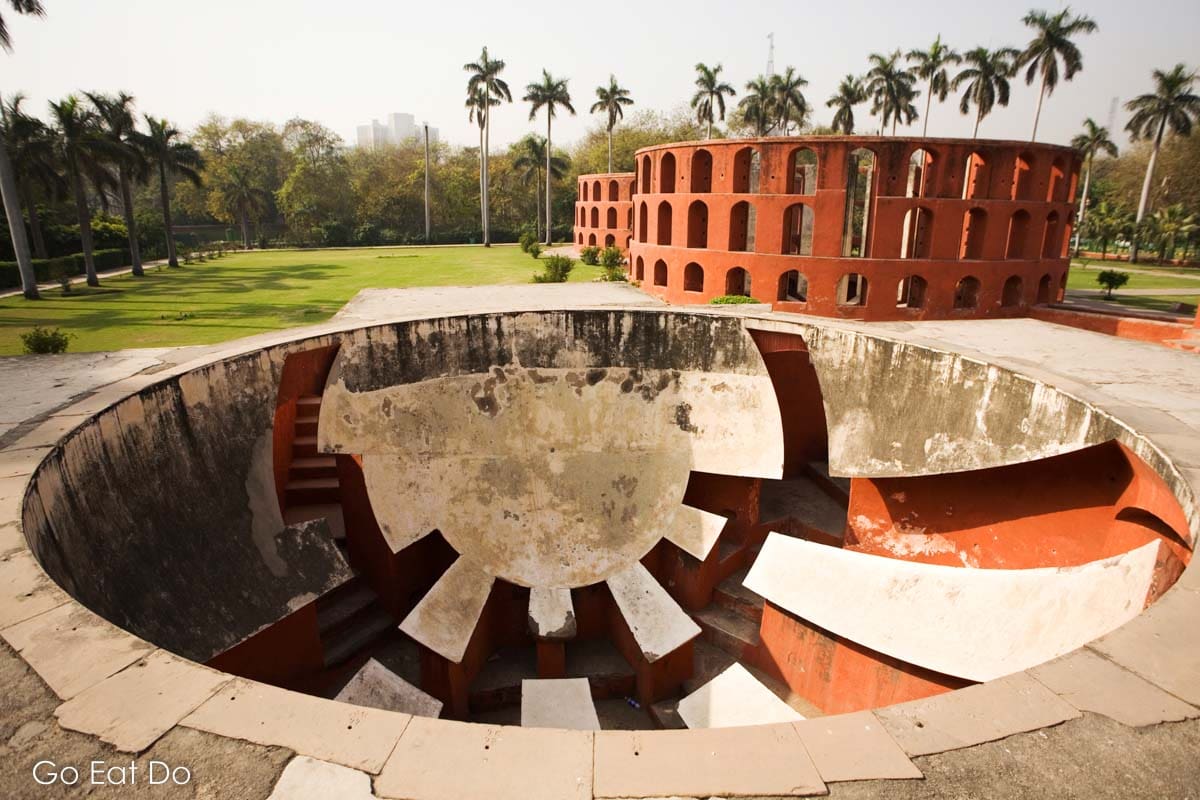
Baha’i House of Worship
So too does the flower-like design of the Lotus Temple, the Baha’i House of Worship designed by Fariborz Sahba. I join the throng of people staring with wonder at the structure and spend a few minutes ruminating in the cool interior, looking towards the nine-pointed star on the ceiling of the 1,300-seat hall.
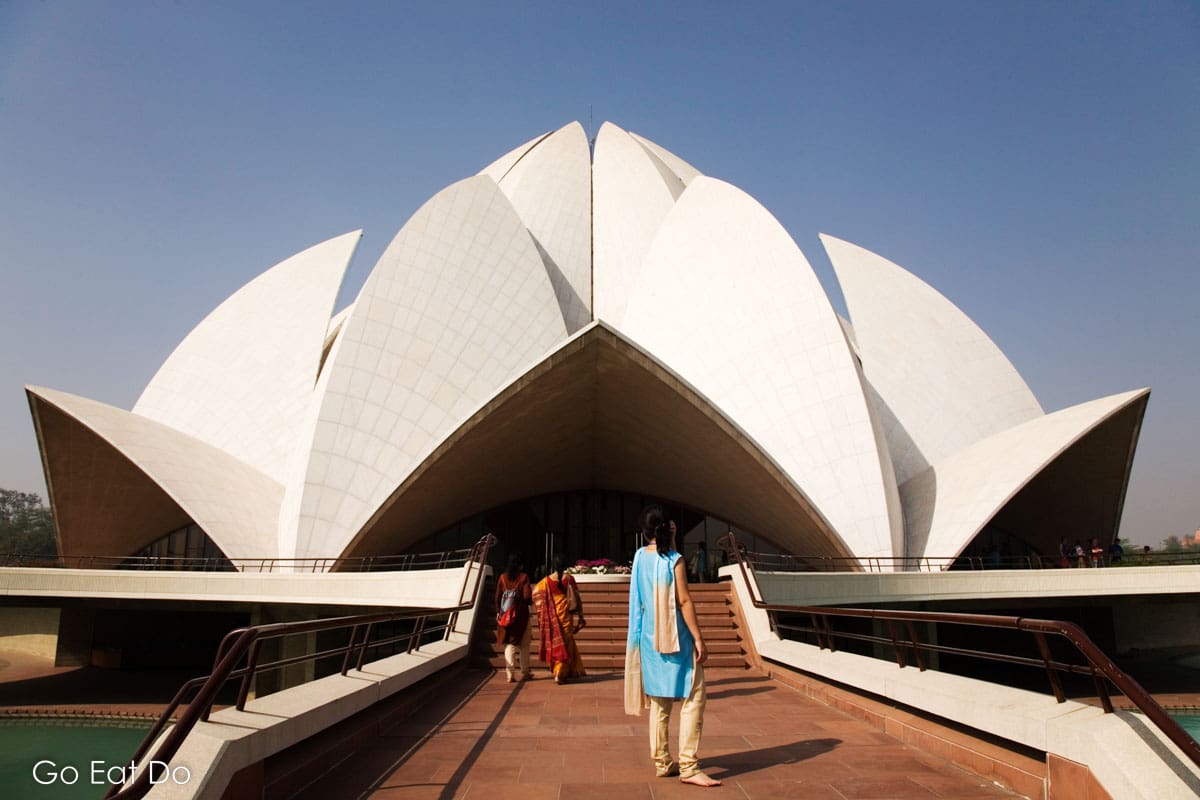
I hail a rickshaw and negotiate a price for the ride to the Laxminarayan Temple, which was constructed shortly after New Delhi’s inauguration. It was opened by Mahatma Gandhi in 1939. After taking a look at the frescoes inside I decide to take a walk between the sculptures in the temple’s garden.
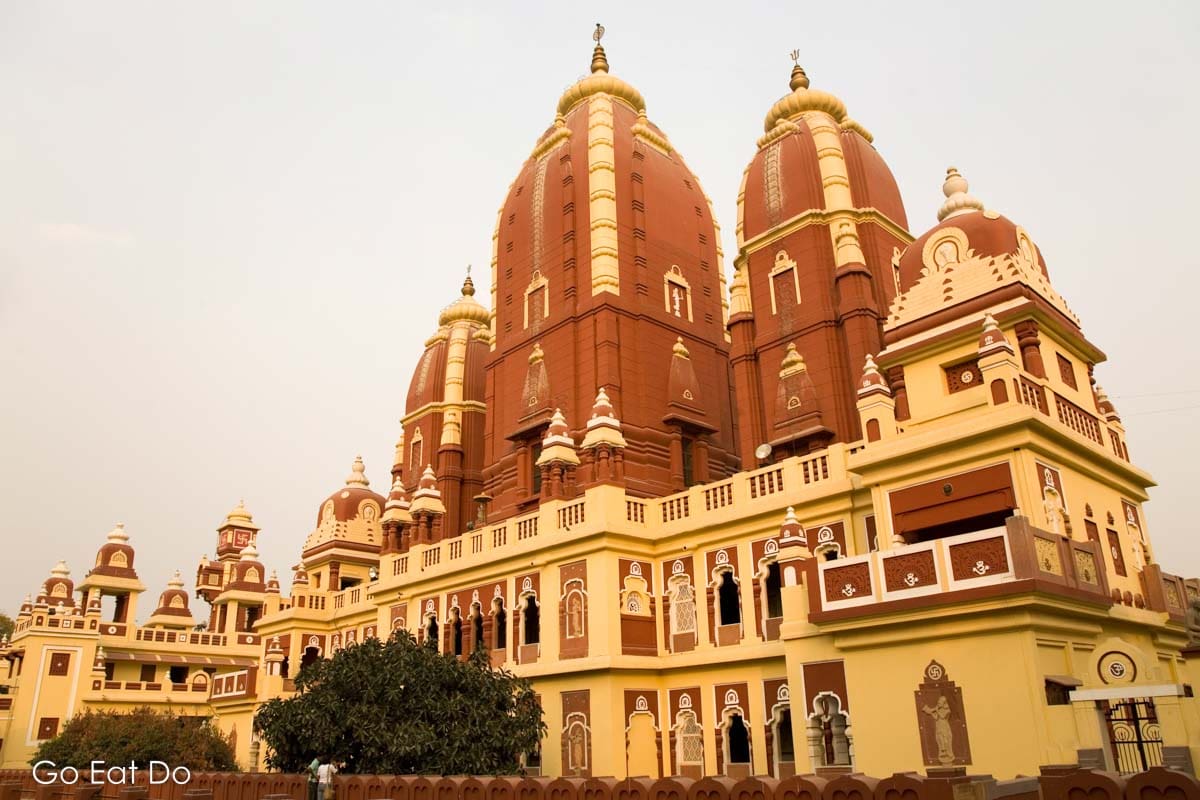
Rajiv Chowk
With daylight beginning to fade, I head to the circular park at the heart of Connaught Place. The commercial hub is also known as Rajiv Chowk. Real estate prices are among the highest in the world but those on the menus of restaurants are reassuringly restrained and sightseeing has made me hungry.
Please feel welcome to leave a comment below if you would like to recommend other places to visit during a heritage walk in New Delhi.
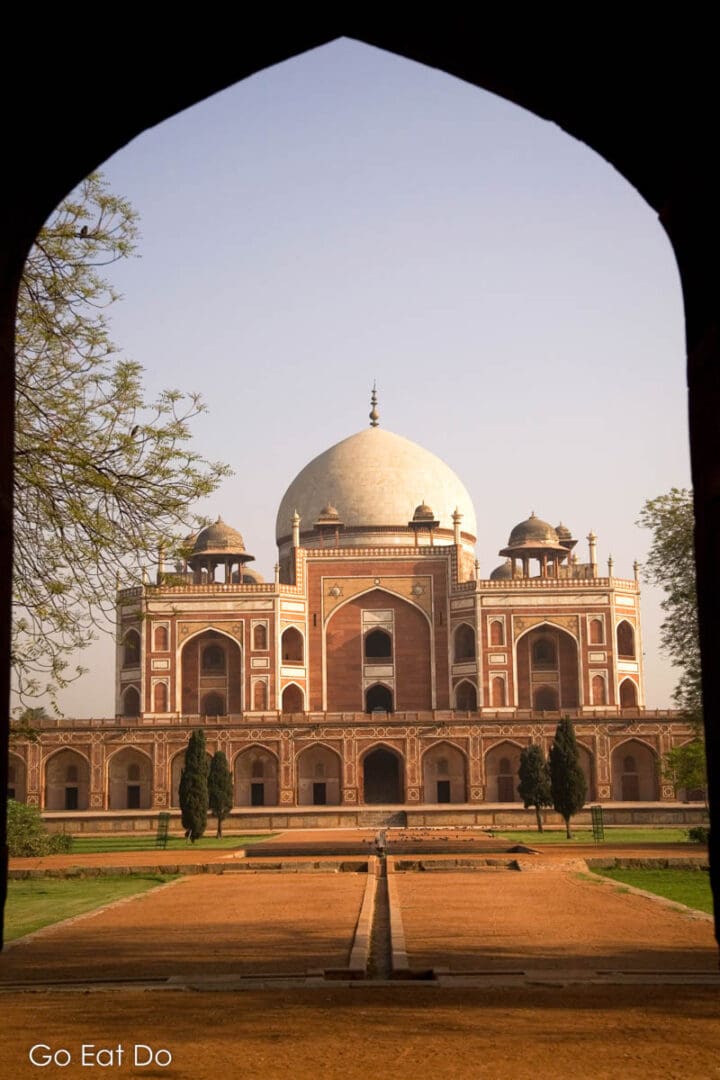
Travel to Delhi
Delhi’s Indira Gandhi International Airport (AITA airport code DEL) is named after India’s first female prime minister. The airport is the principal port of entry for international travellers arriving by air. Delhi Airport is approximately 11 kilometres (7 miles) southwest of the heart of New Delhi.
Getting from Delhi Airport to New Delhi is possible on the Delhi Metro system. The Metro’s Magenta and Orange (Airport Express) lines stop at Indira Gandhi International Airport’s Terminal One.
Buses and taxis also operate between the airport and the heart of the city. Uber services operate in Delhi. Sakha operates a taxi service with women drivers exclusively for female passengers.
New Delhi Station is one of the busiest railway stations in India. Travelling by rail is a magnificent way of seeing and experiencing India.
Map of New Delhi
Zoom into the map of Delhi below to locate places of interest in New Delhi:
Hotels in New Delhi
The 5-star hotels in Delhi include The Imperial New Delhi, The Oberoi New Delhi and the Maidens Hotel New Delhi. Search and book accommodation in Delhi via HRS:
Books about New Delhi and India
Keen to know more about New Delhi and India? You can buy the following books from Amazon by clicking on the links or cover photos:
Lonely Planet Pocket Delhi & Agra: Top Sights, Local Experiences:





Further information
Find out more about the city by visiting the Delhi Tourism website. For insights into the country as a whole take a look at the Incredible India website.
Stuart Forster, the author of this post, has written for Discover India, The Hindu and National Geographic Traveller India.
Photos illustrating this post are by Why Eye Photography.
Thanks for visiting Go Eat Do and reading this post about a heritage walk in New Delhi. You can find several other posts about destinations in India on this site. Here’s a look at why Jodhpur is nicknamed ‘the blue city’.
‘Like’ the Go Eat Do Facebook page to see more photos and content.
If you enjoyed this post why not sign up for the free Go Eat Do newsletter? It’s a hassle-free way of getting links to posts on a monthly basis.
A version of this post was initially published on Go Eat Do on 15 July 2015.
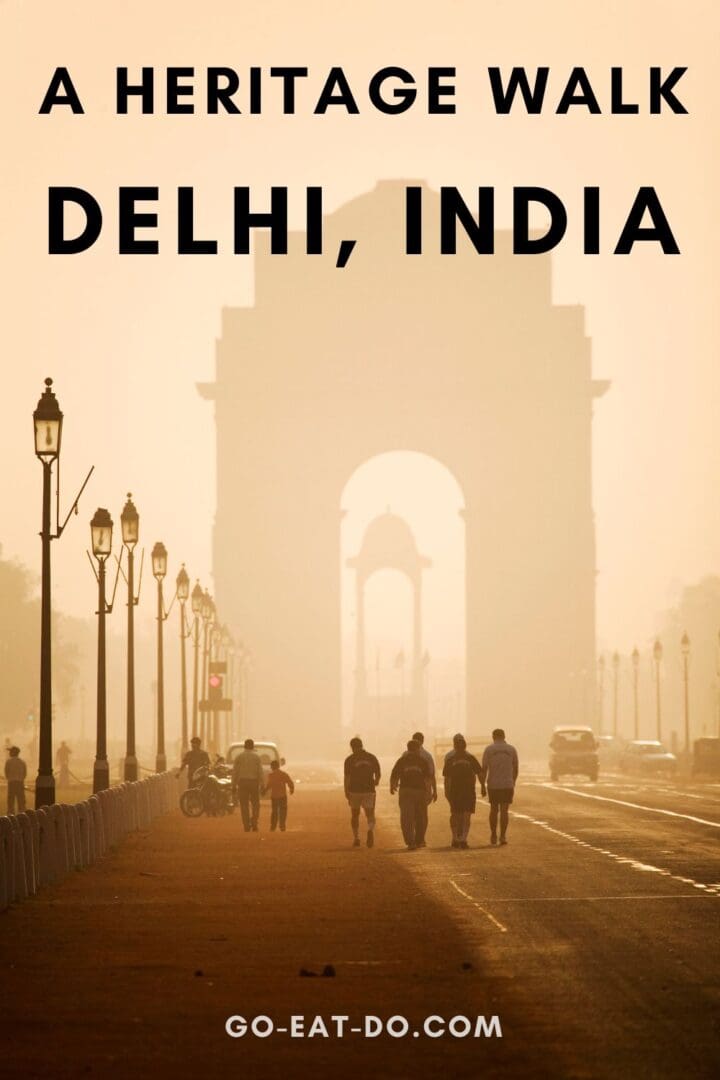



Geoff Moore
August 19, 2022 at 16:52A great idea for getting to know a wonderful city. Thank you!
Go Eat Do
August 20, 2022 at 09:56Thank you for visiting Go Eat Do. There is simply so much to see in and around Delhi. It’s one of those places that you can revisit many times and uncover new facets.
Alan wooding
August 31, 2022 at 09:50A fascinating insight into one of India’s biggest cities.
Go Eat Do
August 31, 2022 at 15:44Thank you, Alan. Delhi is a wonderful place to spend time. It is such a multifaceted destination.